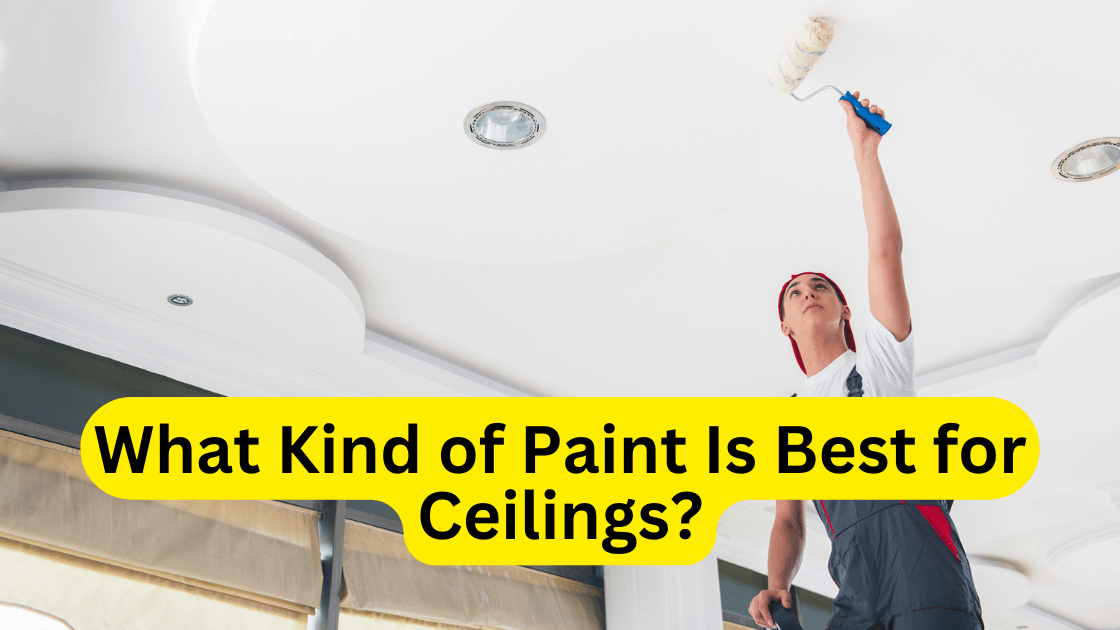Painting ceilings can be a tricky task, and choosing the right paint is crucial for a smooth, professional-looking finish. The type of paint you select will impact not only the aesthetics but also the durability and ease of application. Below, we'll explore the different types of paint that are best suited for ceilings and what factors to consider when making your choice.
1. Flat or Matte Paint
Why Choose Flat Paint for Ceilings?
Flat or matte paint is the most common choice for ceilings. Its lack of sheen makes it excellent at hiding imperfections, which is especially important for ceilings that may have slight bumps or cracks. The non-reflective finish also gives the ceiling a clean, uniform look.
Pros:
- Hides Imperfections: The flat finish conceals any irregularities on the ceiling surface.
- Non-Reflective: Prevents light from bouncing off, which can be distracting.
- Easy Touch-Ups: Touching up is easy and blends well with existing paint.
Cons:
- Less Durable: Prone to stains and not as easy to clean as other finishes.
- Absorbs Light: May make a room feel darker if the ceiling isn’t adequately lit.
2. Eggshell or Satin Paint
When to Consider Eggshell or Satin Finishes
Eggshell and satin paints are slightly more reflective than flat paint, offering a bit more durability. They’re a good choice if you want a ceiling finish that can withstand light scrubbing.
Pros:
- Durability: More resistant to stains and easier to clean than flat paint.
- Subtle Sheen: Adds a soft glow without being too shiny.
Cons:
- Reveals Imperfections: The slight sheen can make surface imperfections more visible.
- Challenging Touch-Ups: Touching up can be trickier, as the sheen might not blend seamlessly.
3. Semi-Gloss Paint
Is Semi-Gloss a Good Option for Ceilings?
While semi-gloss paint is more commonly used on trim and doors, it can be used on ceilings in rooms with high humidity, like bathrooms and kitchens. Its high sheen makes it very durable and easy to clean, but it also accentuates any flaws on the ceiling.
Pros:
- High Durability: Resists moisture and is easy to clean, making it ideal for humid areas.
- Reflects Light: Can make a room feel brighter and more spacious.
Cons:
- Highlights Imperfections: Every bump, crack, and uneven spot will be more noticeable.
- Too Shiny for Most Rooms: The high gloss can be overwhelming in large spaces.
4. Specialty Ceiling Paints
What Are Specialty Ceiling Paints?
Some brands offer paints specifically formulated for ceilings. These paints are usually flat or matte and are designed to minimize drips and splatters during application.
Pros:
- Drip-Resistant: Designed to reduce splatters and drips, making application easier.
- Uniform Coverage: Often have higher viscosity for even coverage.
Cons:
- Limited Color Options: Usually available in fewer colors, often white or off-white.
- Cost: May be more expensive than standard flat paints.
5. Choosing the Right Color
What Color Should You Choose?
While white is the most common ceiling color, choosing a slightly tinted white or a light color can add warmth or character to a room. However, if you have a low ceiling, sticking with a lighter shade can help the room feel more spacious.
Ceiling Painting in Philadelphia by Pinnacle Painters
When it comes to ceiling painting in Philadelphia, Pinnacle Painters stands out as a trusted and reliable service provider. With years of experience in the industry, Pinnacle Painters is known for delivering exceptional quality and attention to detail in every project. Whether you're looking to refresh the ceilings of your home or require a professional touch for commercial spaces, their skilled team ensures a flawless finish. Pinnacle Painters uses the best quality paints and techniques tailored to meet the specific needs of Philadelphia's diverse architectural styles, ensuring long-lasting and visually appealing results.
Conclusion
When choosing the best paint for your ceiling, consider the room's purpose, lighting, and whether the ceiling has any imperfections. Flat paint is generally the best option for most ceilings due to its ability to hide flaws and its non-reflective finish. However, in rooms with high humidity, you might opt for a semi-gloss or satin finish for added durability. Specialty ceiling paints can also be a good choice, particularly for those seeking a hassle-free application.





Comments